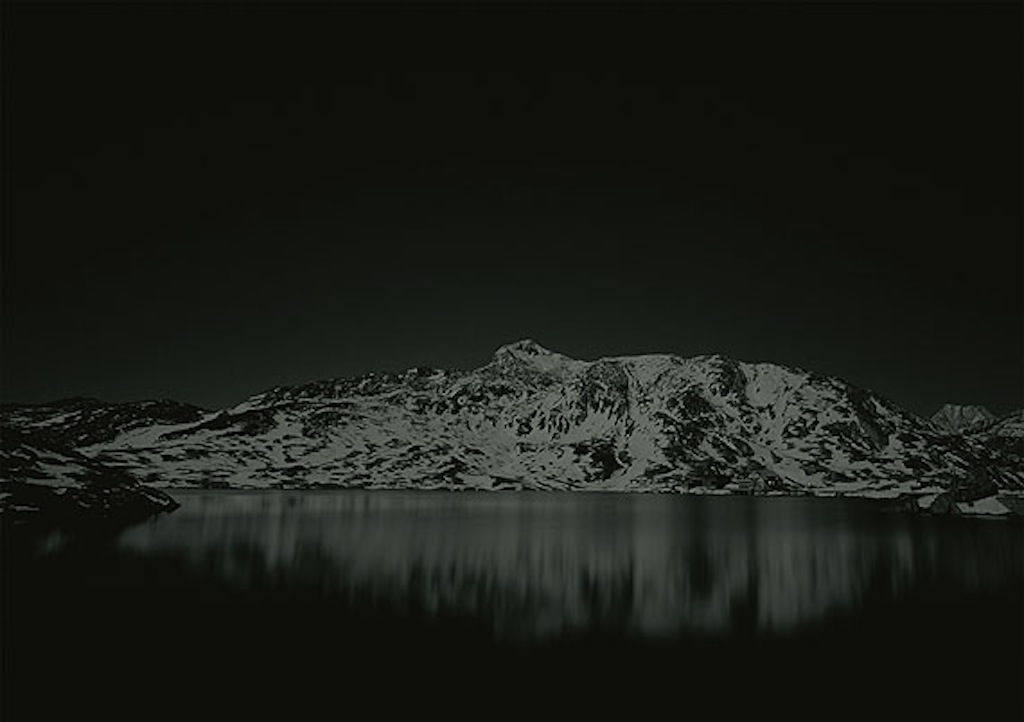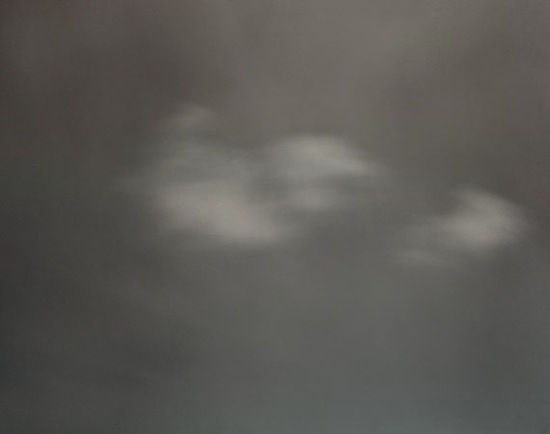
© Michael Schnabel: Sidelhorn, 2003, pigment Print, Auflage AP, 72 x 99 cm
Galerie Persiehl & Heine Bergstr. 11 20095 Hamburg Allemagne
Michael Schnabel
Nachtstücke
Michael Schnabel is well-known for a photographic approach that explores the outer limits of the visible. It is well-known that, in his Stille Berge (‘Serene Mountains’) series and other night images, precisely these sublime marvels of the landscape were not illuminated by light but that he drew (in both senses of the word) them out of the darkness. Using an exposure time of about an hour, his large-format camera was able to gather just the amount of available light needed for the form of a mountain like the Bristen to be composed of finely shaded tones of darkness.
It is immediately evident that this photographer is not motivated by some sort of sentimental striving to create images combining conventional ideas of beauty with awe-inspiring subjects. His mountains, oceans and museums, as well as his images of the sky and clouds, have nothing to do with postcard aesthetics. The pictures in this catalogue reproduced using high-end offset printing also give only a mere inkling of the tactile qualities of the photographs to be seen in this exhibition. Just like paintings, Schnabel’s pictures have to be seen in the flesh. This is an absolute ‘must.’

© Michael Schnabel: Nachthimmel III, 2002, pigment print, Auflage 5, 72 x 92 cm
Mountains, water, the sky and, most recently, museum interiors are the preferred subjects of the photographer, Michael Schnabel. Light and the absence of light comprise the formal framework of these works that – as each individual work – portray an optical phenomenon. The aim is not some form of scenic representation but rather absolute concentration on the photograph as such, something pure and unadulterated. If, when considering these works, one puts aside their subject matter for a moment in favor of their epistemological aspects, it becomes evident that Michael Schnabel distances himself from the objects that he depicts. Nonetheless, the object is never deprived of its concreteness but rather is subjected to unflinching scrutiny.
In an interview, Michael Schnabel has said the following: “I wanted to create an image of mountains that would get away from the ways that they had been seen before.”
This ‘getting away’ from the traditional modes of aesthetic seeing led directly to a world of abstract photography independent of the subject matter. The natural world that Schnabel requires – because the appearance of objects is his point of departure – is nothing more than a vehicle in these works. His subject is shown in a particular light situation that conceals more than it reveals. As a rule, a mountain is reduced to a close-up view that may have its own particular fascination; yet, in the final analysis, what do these pictures actually tell us about the mountains themselves, their location or the vegetation on their lower slopes?
These are not nature photographs that aim at enabling the viewer to identify a particular object with a specific location in the natural world.
Going beyond the epistemological approach, it is possible to make the following general observation about these pictures: they are fascinating because they are so different. This photography portrays itself. This is its substantive connection with painting. If they were painted, these images would lose their authenticity. These photographs have an elementary quality. They simply are.
Tayfun Belgin – Osthaus Museum, Hagen
photo et vignette © Michael Schnabel

